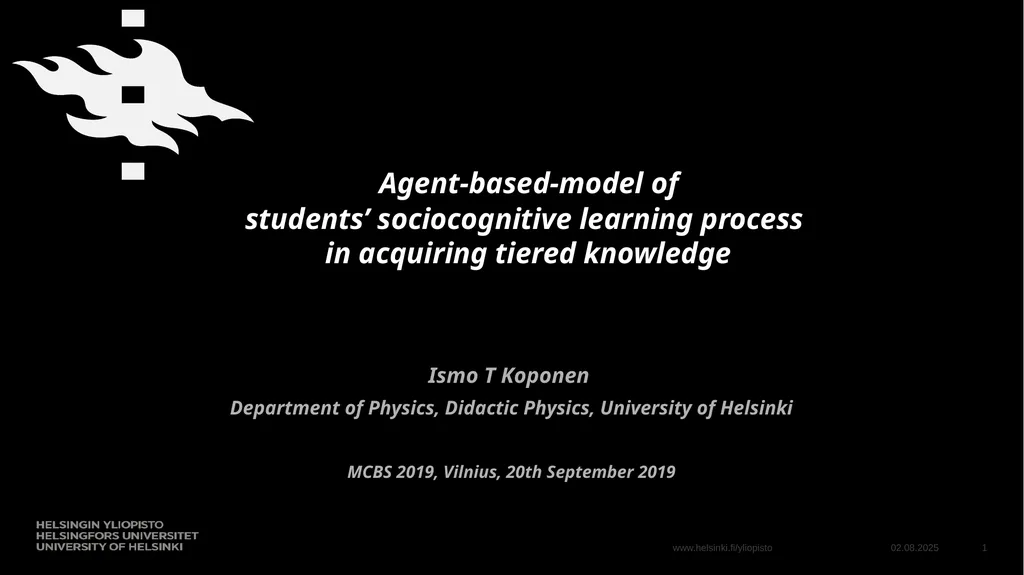
Agent-based-model of students’ sociocognitive
Author: pamella-moone | Published: 2025-08-04
Description: Agent-based-model of students sociocognitive learning process in acquiring tiered knowledge Ismo T Koponen Department of Physics, Didactic Physics, University of Helsinki MCBS 2019, Vilnius, 20th September 2019 19.9.2019 1 P1: How students
Download Presentation
Download the PPT/PDF: Download
Transcript:
Loading transcript�